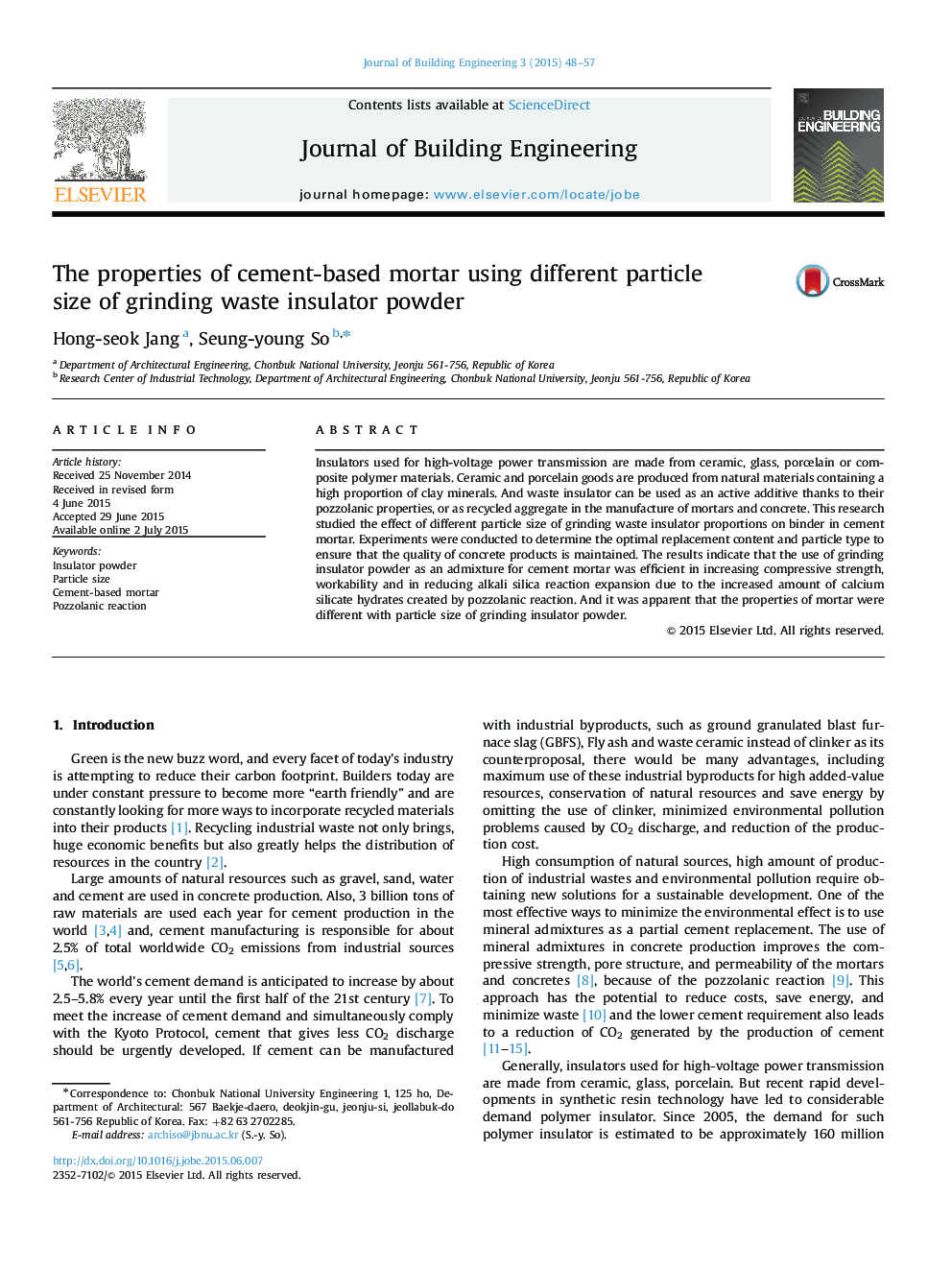| Article ID | Journal | Published Year | Pages | File Type |
|---|---|---|---|---|
| 283864 | Journal of Building Engineering | 2015 | 10 Pages |
•Grinding insulator powder comprises mainly coarse and angular flaky particles with a broad particle size range. And the chemical compositions of grinding insulator powder was observed that SiO2 (65.24%), Al2O3 (19.1%) and CaO (2.85%).•Grinding insulator powder as an admixture for cement mortar was significantly efficient in reducing alkali–silica reaction (ASR) expansion and increasing workability.•The longer-term compressive strength for the mortar with insulator powder is higher than that of the control group. Among those tested, the small particle size 5% insulator powder mortar had the best performance.
Insulators used for high-voltage power transmission are made from ceramic, glass, porcelain or composite polymer materials. Ceramic and porcelain goods are produced from natural materials containing a high proportion of clay minerals. And waste insulator can be used as an active additive thanks to their pozzolanic properties, or as recycled aggregate in the manufacture of mortars and concrete. This research studied the effect of different particle size of grinding waste insulator proportions on binder in cement mortar. Experiments were conducted to determine the optimal replacement content and particle type to ensure that the quality of concrete products is maintained. The results indicate that the use of grinding insulator powder as an admixture for cement mortar was efficient in increasing compressive strength, workability and in reducing alkali silica reaction expansion due to the increased amount of calcium silicate hydrates created by pozzolanic reaction. And it was apparent that the properties of mortar were different with particle size of grinding insulator powder.
